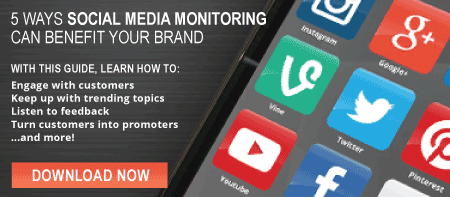
Twitter is employing a social media algorithm for the first time in the platform’s history, and people are not thrilled. This means that instead of tweets appearing in reverse-chronological order, an algorithm will be used to boosts posts that are considered more relevant to the reader.
The hashtag #RIPTwitter has been circulating as brands and individual users alike voice their displeasure with the idea of incorporating an algorithm into the Twitter timeline. They worry that the content incorporated into the new timeline will be limited, causing them to miss updates from channels they follow. Businesses also worry this means their promotional content won’t get as much reach once the timeline is in place.
Are these concerns founded? Let’s look at the facts.
Why is Twitter Changing Their Timeline?
Twitter started toying with the idea of moving to an algorithmic timeline in June, thinking it could boost content that’s more popular on the network. Twitter’s biggest rival, Facebook, has long-employed an algorithmic timeline with success. Now Twitter appears to be following their lead.
A small group of test users tried out the algorithm change in December, according to The Verge. At this time, the CFO of Twitter claimed they were trying new organization methods because they felt some tweets were getting buried in the sheer amount of content shared on the social network. Instead, Twitter hopes to start curating tweets so that more relevant content will be highlighted. Will these changes make for a better newsfeed? Only time will tell.
On February 5 2016, Jack Dorsey, CEO of Twitter, announced the algorithmic system, but the official launch date remains unclear. The new algorithm will be based on the “while you were away” algorithm they used a few years ago. So, when users log onto Twitter, relevant tweets will be highlighted in a condensed newsfeed. From here, readers can refresh the stream to see the reverse chronological order stream they’re used to. Sources including Buzzfeed and NBC News report that the algorithm change will initially be opt-in only, though Dorsey has not directly confirmed this.
Where the Criticism Lies
Critics to the algorithm change point out that the Facebook algorithm started out as opt-in, before it was made mandatory by the network. Currently, Facebook users can select a “most recent” display for their timeline, which displays their content in reverse-chronological order. However, this algorithm setup still limits the amount of content displayed.
For now, all recent tweets from channels you follow appear on your timeline. Users are concerned that with time, this new, relevant content will take precedence over other tweets, making it difficult to follow the stream. “Live tweeting” events would no longer be possible because the message would become scrambled if displayed out of chronological order. Businesses also fear that content would be missed entirely if it doesn’t make a user’s condensed timeline.
What does Twitter’s Algorithmic Timeline Mean for Marketers?
Right now, your Twitter marketing strategy won’t change. The reverse-chronological timeline is still the default way to view content on Twitter. Following the inbound methodology, striving to create content that’s relevant to your buyer personas will only improve your chances of maneuvering changes to the Twitter algorithm with ease.
Additional ways to boost relevancy include:
- Uploading Rich Media: Twitter is hoping to improve their methods of adding video content to tweets. In the past you could only share video from Vimeo, YouTube or similar services, but Twitter is hoping to create an app that will allow people to upload and edit video directly to the network. Businesses taking advantage of this system will likely see a relevancy boost from the network.
- Direct Tweets: Direct tweets will now allow you to share tweets privately within a direct message. This has the potential to allow you to connect with potential leads in a way that can’t be missed on the algorithmic timeline. Though, like email marketing, this feature will need to be utilized carefully to avoid spamming.
Pay careful attention to what kind of content you push out and when you share it. Running an analytics report can help you determine what kind of content and hashtags your viewers tend to interact with to increase your chances of being seen as relevant by the algorithm. Making note of when your audience tends to be online will also allow you to share items in live time rather than worrying about being selected for the “while you were out” highlight reel. By carefully adjusting your Twitter content strategy based on the behavior of your buyer personas, you will be able to stay relevant.
Topics: marketing






